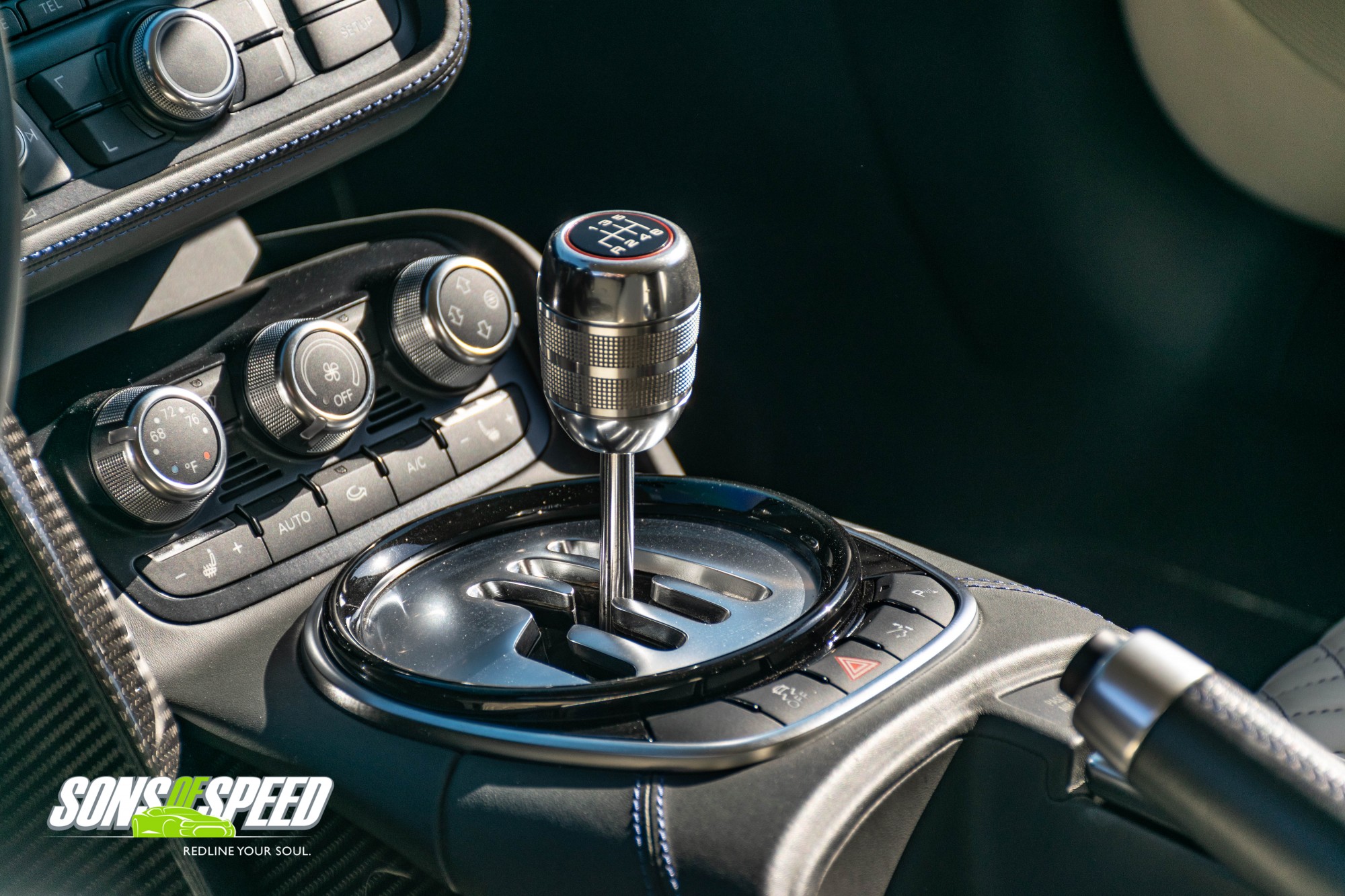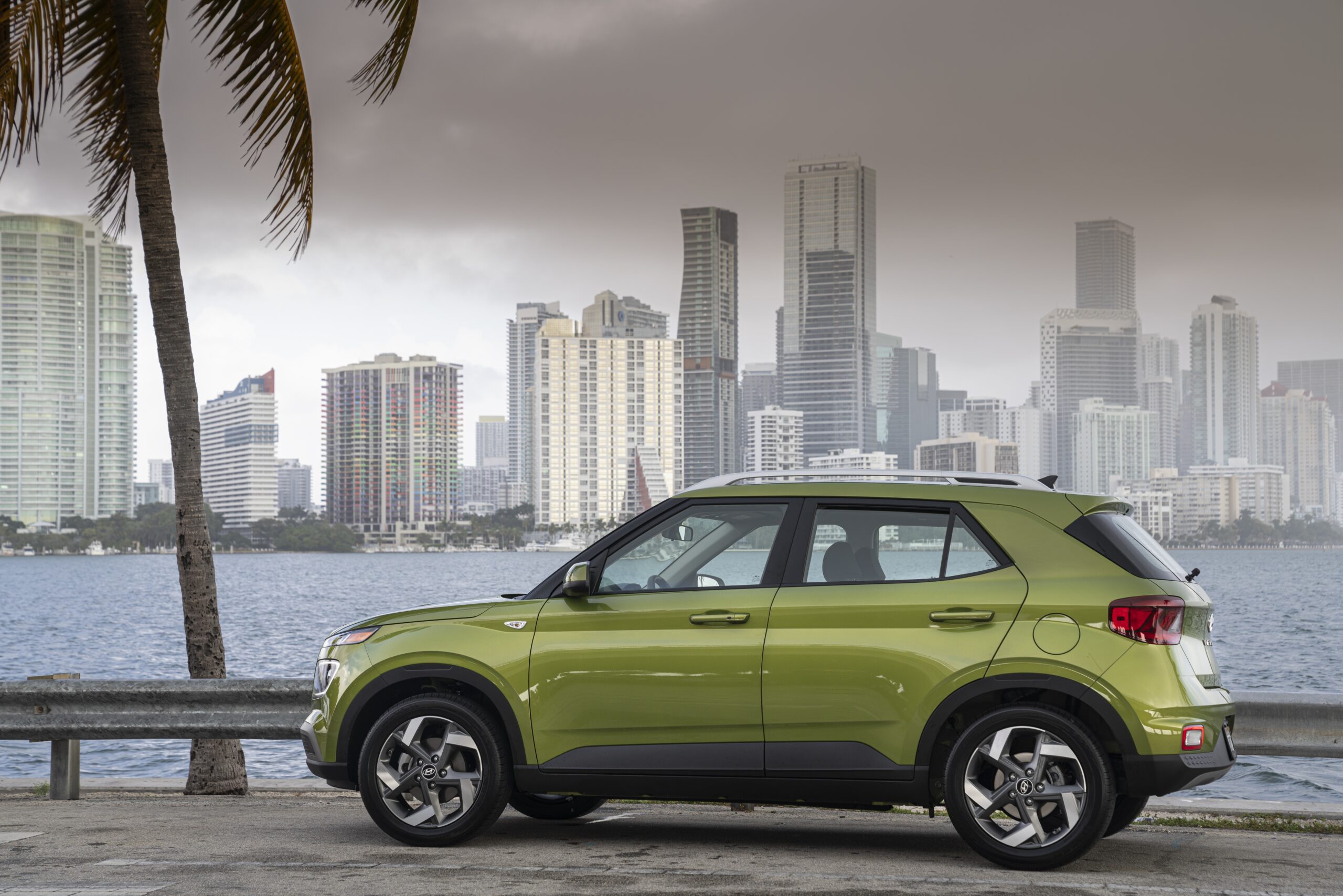2020 C8 With Harlan Charles
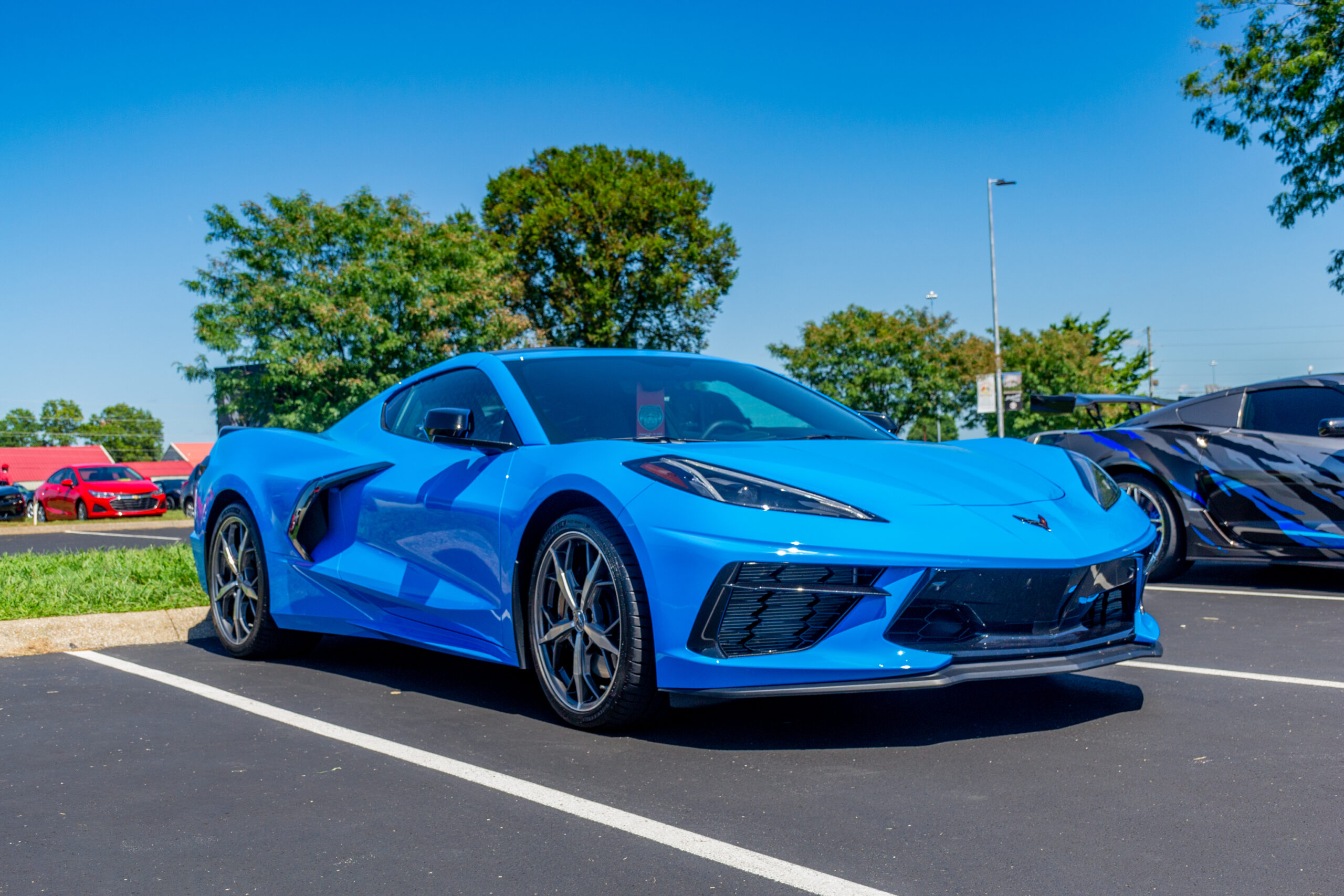
Inside the 2020 C8 Corvette with Corvette Product Manager Harlan Charles
During the very busy 25th Anniversary celebration of the National Corvette Museum in Bowling Green, Kentucky (right across the street from the Corvette factory), Corvette Product Manager Harlan Charles took time out of his schedule to sit down with Sons of Speed for an interview on the new 2020 Corvette.
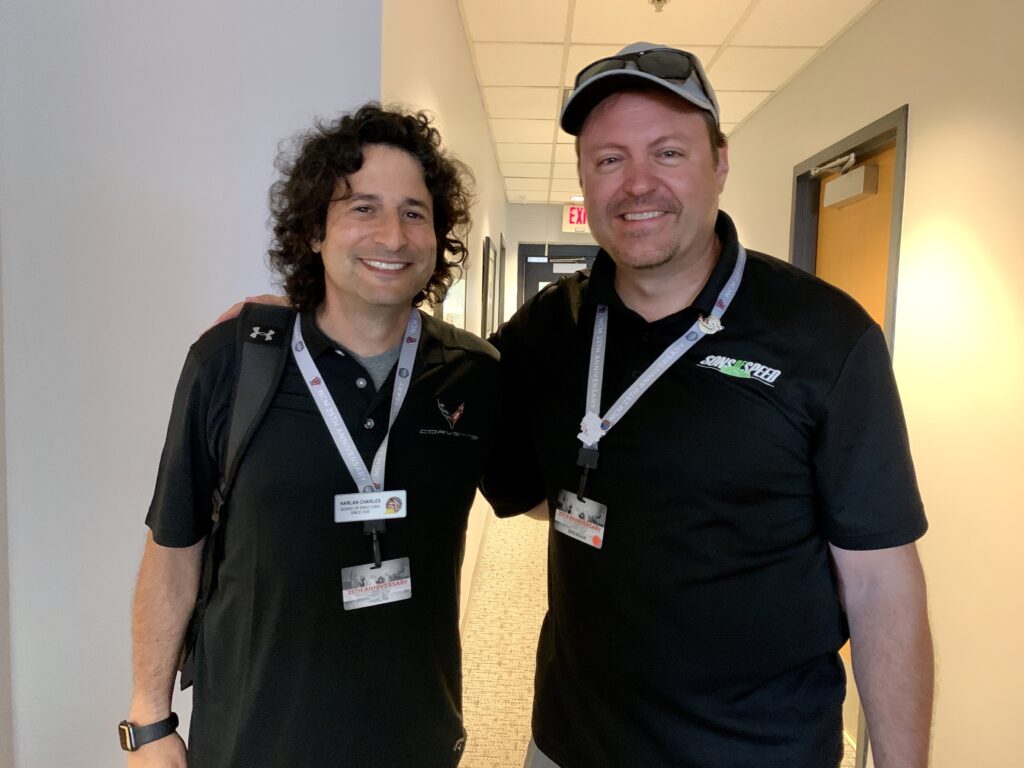
SoS: Harlan, you’ve just given an excellent presentation on the new C8, and I’ve got a few questions for you. I saw a slide, I think it was yesterday or the day before, that when the C7 was being introduced you already were working on the C8.
HC: Oh, yes.
SoS: So, when did the C8 first go into development?
HC: Well it depends how you talk about it. If you’re talking about when we started working on a mid-engine concept? I worked on a proposal back in 2005, actually, which would have been the seventh-generation car. We actually had an approved program at one time for the seventh-generation car to be a mid-engine car. But, as you know, things happened at GM – financial issues – so that program got shelved. So, then priorities changed and we received permission to only update the six-gen car. That project, as you know, started out small but we ended up doing an all-new car anyway, so the seventh-gen became the seven. But we always knew that we were going to go back to the mid-engine concept. It’s really our dream.
SoS: When you launched the C7, what stage in development was the C8 car at that point?
HC: At that point, we had just started to kick it off again. We were doing – as you might have seen in the presentation – we were doing architecture studies trying to find just the basics of the car: what the wheelbase was going to be, the length, and all that, the packaging – things that we were just getting started to think about as we launched the seventh-gen.
SoS: Now, the C7 car made heavy use of plastics, carbon fiber – and when I say plastics, I mean, composite panels. Was there any fiberglass on the seventh-generation car?
HC: Well, the composite – a lot of people call it fiberglass – is kind of the older term, but it is, you know, composite. But the big thing that we did do with the seventh-generation that enabled this new car was switching over to aluminum chassis and frame for the entire car. So, we switched the Bowling Green assembly factory over to being able to make in-house aluminum structure, and that was a big enabler because we knew we wanted that for the mid-engine car, even though the frames are quite different. But just getting that experience and being able to manufacture the aluminum here in Bowling Green was a big step in that path.
SoS: As Tadge likes to say, the subframe is the part that gets the engineers excited, not body panels. What are the panels all made from? Are they all the same material or is it kind of like the C7 where different panels are made from different materials? Are some of them carbon-fiber? Can you kind of go through what the different exterior panels are made out of?
HC: Yeah, the Corvette, since the beginning, since the 1953, has a history of innovation and materials using fiberglass, but yeah there’s different types of composites throughout the car. Obviously, the facias have more flexibility as the bumpers, and then the side panels are more rigid. We have carbon-fiber roof panel available, and for the first time part of the structure – actually the rear the rear bumper beam – is carbon-fiber. So, we actually have started to filter in some carbon fiber structure into the aluminum structure.
SoS: Is the standard painted roof panel also carbon fiber but just painted like it is on the C7?
HC: So, the standard is composite, and then we have the transparent option and then we have the visible carbon option.
SoS: Is there a weight difference between the standard roof, the transparent roof and the visible carbon-fiber roof?
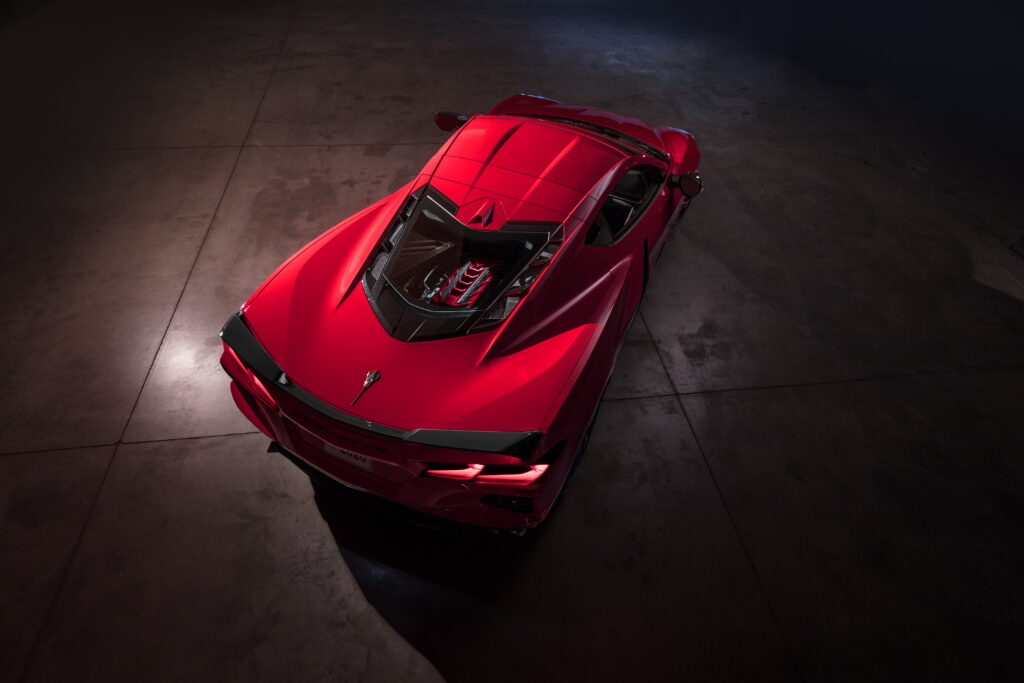
HC: Yeah, so the standard roof is about 15.5 pounds, the carbon fiber is about 14 and the transparent is about 17, so a little bit heavier, but all of them are very easy for a person to take in and out of the car and store in the trunk. It’s something you can do by yourself. So, they’re all relatively lightweight, and actually, even the standard roof is lighter than the previous-gen roof.
SoS: I believe the previous-gen roof is 11 pounds – because it’s painted carbon-fiber –
HC: 16.
SoS: On the C7?
HC: It’s 16.
SoS: Is it 16?
HC: Mmm-hmm.
SoS: Wow, I’ve got to go weigh mine now. I’ve got both the glass – I know the glass is much heavier you can actually feel it when you…
HC: Yeah that’s a little bit more, but, it’s a great feature and a lot of people forget that with the Corvette- and that was one of the things, you know, when we did this new car, we wanted to keep that removable roof panel standard on the car and we didn’t want people to have to leave it on the side of the road or leave it home like on some of these exotic cars. We wanted to be able to store it in the car, which you can. One of the things we wanted to do was, even though we’re doing a mid-engine car with exotic supercar attributes, was maintain the things that people love about Corvette. So that you can drive it every day, it has great storage. We have two trunks now, and everybody in the focus groups ask the same thing – they want to know is if two sets of golf clubs fit. The roof fits in the rear and stores in the rear and you still have other luggage space available. So, it’s a great car: it’s not only a track weapon, but it’s a great car to take across country. We actually have, what, 8,000 people here that did caravans all around the US and Canada; that came here and they all travel in their Corvettes. So, we wanted to make sure they can still do that when they get the new, 8th-gen mid-engine Corvette.
SoS: So, we talked about the removable roof panel, what we saw briefly at the launch of the C8, but what we haven’t really heard much about lately, is a convertible version. And so is one still planned for 2020? Is that something that may be coming down the line? Can you tell us anything about the convertible?
HC: Well, there is a convertible coming, and it’s gonna be beautiful. But we have a- we’re gonna have a special reveal for that later this year in the fall and we’ll get all the details out then.
SoS: Beautiful.
HC: But, it’s something everybody should be excited about.
SoS: Now, the one thing that has sort of been controversial for a lot of people, us included, because we happen to be partial to manual transmissions, is that there’s only one transmission available. And so, a few questions about this. I know it’s kind of been a little bit beat to death, but is it physically possible to put a manual transmission in this car? In the C8?
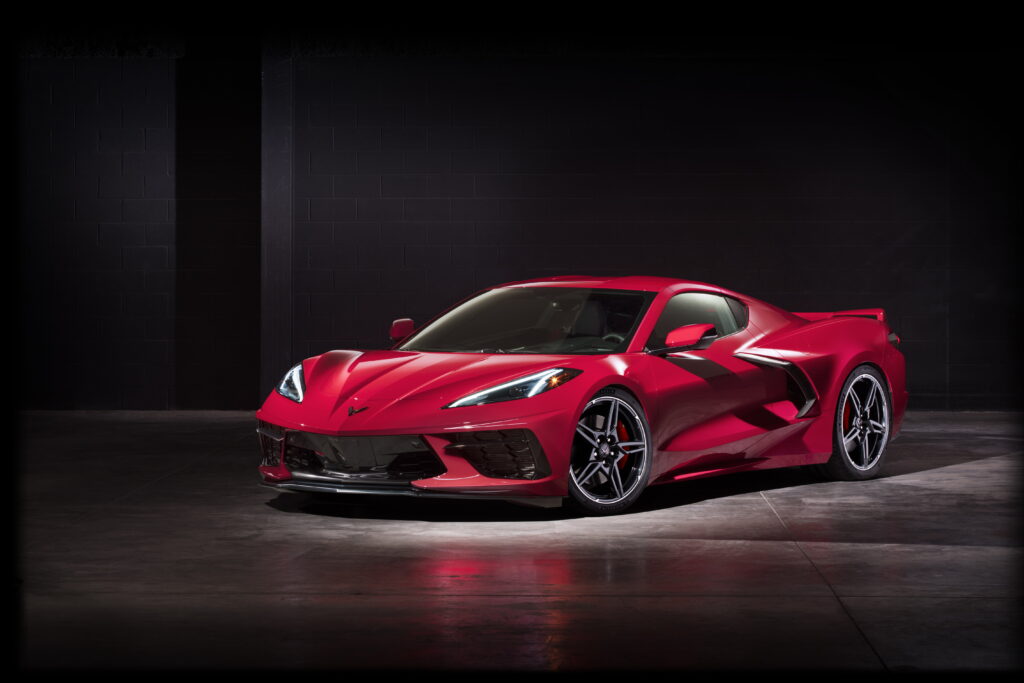
HC: Probably not.
SoS: “Probably” not?
HC: Not easily.
SoS: Okay.
HC: And there’s no plan to do that; however, I do understand where everybody’s coming from. Me, personally, I’ve always had manuals, but I think once people get a chance- it’s hard to, without experiencing it, but once people will get a chance to experience this car- I mean, I drive it in manual mode most of the time personally, and it’s just a lot of fun to drive. You get those quick shifts with the paddles, tenth of a second. We also have- there’s a lot of things you can do with this transmission that you can’t do with the older style manuals, and that is there’s no torque loss as you shift gears, even manually or automatically, and that enables a lot of the 0-60mph under three seconds, you know, the no torque loss. We used to, on the manuals, gear it so for that in first gear, we could do 0-60 in first gear, which was kind of cool, it helped the 0-60 time, but the launch probably wasn’t as quick as you might have wanted. So now, that’s why this is among the fastest Corvettes 0-60 we’ve ever created. It’s right there very close to the ZR1 even with 495 horsepower versus 755. That’s the- the transmission is a big part of that, the architecture a big part of it. The other thing as you go through the different modes – we have the driver modes you’re probably familiar – tour, sport, track, you can change how it shifts, how it’s programmed. So what we did in the tour mode, that’s like you’re cruising around, might shift a little slower, smoother. If you’re putting it in automatic, it’ll be kind of what you’re used to with an automatic. But when you get to sport and track as you go further, especially in the manual mode, you really feel those shifts. So as you shift it, you feel in your back. We hear the exhaust pop, and it makes the car a lot of fun to drive. I think once people get a chance to experience that, you know, I understand the hardcore manual person, but if it’s about having fun driving anything they’re gonna be very happy with this.
SoS: Yeah, the criticism is usually “I’m bored to death, I have nothing, you know- that I’m not in control of the car, the car’s doing stuff for me.” But the one thing that people are holding a little hope out is that there’s that patent you guys have on drive- a clutch-by-wire system and with cables and even maybe an electrical wire system it seems like it’s probably physically, engineeringly possible. I know you’ve got that center stack you don’t want to mess with, the backbone in the car, but it seems like it would be technically possible. Is any of that stuff even being thrown around at this point in time?
HC: No, we’re not working on that.
SoS: Not working on it.
HC: Uh, no-
SoS: We’re very sorry to report the manual seems to be dead in the Corvette.
HC: Again, I would say we still have a manual, it’s just this kind of manual and not that kind of manual. I understand where everyone is coming from- I just say hold your opinion until you get a chance to drive it, that’s all I would say.
SoS: Yes, and we will be definitely looking forward to that drive. Now-
HC: You know, one thing I had somebody say, it’s funny, somebody in Carlisle – we just had Corvettes at Carlisle – he told me the whole thing about how he misses the manual and everything. And he was, you know, was being kind of- almost getting angry a little bit, but then when we’re done talking he said, “Well, I do have one on order.”
SoS: Well, that’s- you know, that I think the car is going to do very well as it sits right now. So, would we like to see a manual? For sure. But like I said we’ll reserve judgment on how it drives until we get a chance to drive it. Now, how much thought was given to the do-it-yourself mechanics? So, someone who’s changing their own oil or maybe they’re diff fluid, and how easy or difficult is it now compared to the seventh-gen car to get in there and do things like that?
HC: Yeah, we actually put a lot of thought- you know, what’s funny is the preconceived notions were some of the things you were talking about, the noise, the heat, easy to service, that people had thought about older mid-engine supercars, and we wanted to get rid of all the bad perceptions and keep the Corvette’s strengths. So, the underside of the car is all sealed, which is kind of cool. But we did leave access so you don’t need any additional tools to access the oil filter and the drain plug, so that it’s very easy to do oil changes.
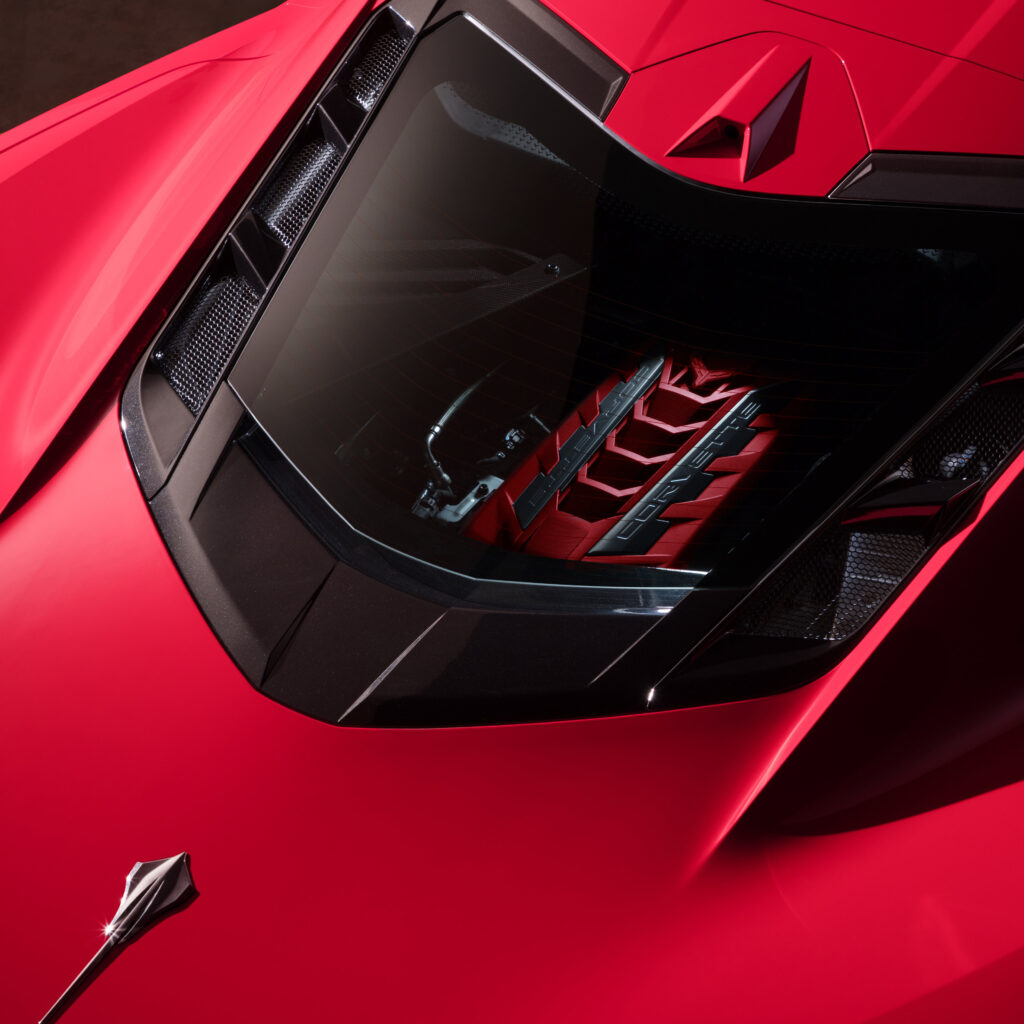
SoS: You mean a manufacturer can actually design a car that you don’t have to pull the engine out to change the oil?
HC: Exactly!
SoS: Amazing!
HC: You can even change the spark plugs, you know, every hundred thousand miles, but you can do those from the top of the engine. You can by removing some of the panel- one of the panels in the back, you can get to the drive belt. You can also get to the air filter through a panel that’s in the trunk-
SoS: Oh.
HC: So, it gets you to that engine air filter. So, we did do a lot of things to make it relatively easy- even though the car is so new, the maintenance schedule should be what people are used to for the most part.
SoS: Speaking of removing panels, I’ve heard – and if you could verify this it be awesome – that the high wing that’s available requires the rear fascia be removed in order to install it, is that true?
HC: Yes.
SoS: And is that the real reason why you can’t get it on the RC8 [museum] delivery, and is there any talk about allowing that on RC8?
HC: Yeah, and if everybody’s familiar with the previous Corvette, 7th-generation Corvette, it was- it’s the same situation. Actually, there was a point when we first started museum delivery, they couldn’t do any accessories. But as we’ve been working with them some of the easier accessories they can do. But the museum can do- does a great job but they’re not a full-service dealership so anything that involves drilling or removing fascia or mounting wheels and tires, you know, at this point they’re just not ready to handle that. But the good news is, you can still do your museum delivery and when you get back to your dealer you could get these accessories install it at your hometown.
SoS: And removing the Z51 wing won’t leave any holes? Let’s say I ordered a high wing car for museum delivery, how would the back end come? Would it just come plain like a Stingray?
HC: No, it’ll come with the- all the cars have to come from the factory complete, so it would come with the Z51, but with the high-wing mounts in the same locations.
SoS: So you won’t be able to tell it ever had that-
HC: Right.
SoS: The Z51 wing, and you got something you can mount in your garage!
HC: Yeah, you can save that.
SoS: Exactly!
HC: And I would say the high wing is kind of cool because it has a little bit more downforce than the standard wing, but the main thing is that reduces a lot of drag being a more open wing.
SoS: The standard wing or the higher one?
HC: The higher one because there’s less drag being a full wing.
SoS: So, you might even get a little more on the top end.
HC: Yeah.
SoS: Very cool. One thing we really love is the PDR, and on the seventh-gen car, actually, that’s the reason I personally waited till the 2015 model year is I really wanted the PDR, and then I lost the cyber gray metallic color, which I didn’t really like, but- I picked black and I got my PDR. On the new car, we did a YouTube video before the launch, and one of the things that we suggested – a lot of the stuff that we actually wanted to see on the car, you put in the car, so you’re sort of thinking of a lot of stuff that we’re already hoping for, including the MyMode, and the Z-Mode. That was stuff that we were hoping that would be in there. And one of the things that we suggested on the PDR was what you’re doing with the dashcam mode.
HC: The auto record, yeah.
SoS: There was one other suggestion we have, and I think this is probably something you could probably do with your over-the-air updates now, and that is some kind of a sentry mode where there’s some motion detection or bump detection that would turn on the recording of the PDR, to at least get some sort of view: did somebody just hit me? Is someone trying to break in the car? Or is somebody vandalizing it?
HC: When you’re away from it?
SoS: When you’re away from it.
HC: Yeah, that would be cool.
SoS: So, is that something that’s possible that you could actually implement and do an over-the-air update?
HC: We’ve talked about things like that. It makes it a little difficult when the car is off, and one of the issues, too, is there’s a lot of laws that you have to acknowledge when it’s recording.
SoS: No audio, yeah.
HC: Yeah, with the audio and even the auto-record it will give you a little screen, just click the button on the steering wheel that you’re okay that it- so everybody knows when they’re being recorded.
SoS: Right.
HC: But, those are good ideas, obviously, and-
SoS: You could even incorporate that rear view camera and have almost front and back-
HC: Yeah, we talked about more cameras or even we’ve talked about adding your own cameras and things like that.
SoS: That would be-
HC: -Fun-
SoS: That would- the technology is there for that.
HC: Technology is there, and I’m really proud of the performance data recorder. It’s something I had worked on a long time and it took a while to get out, but even still – like you have the 2015 – I think we still- nobody’s really come close to it. We have a fully integrated system that’s integrated with the car, audio/video, and gets all the data like a race engineer-
SoS: It’s amazing-
HC: Valet mode is a great feature, people love that. You know, people have solved a lot of issues, figured out what things happened.
SoS: And that’s a deterrent, by the way. You turn it on, and you’ll prevent problems from ever occurring.
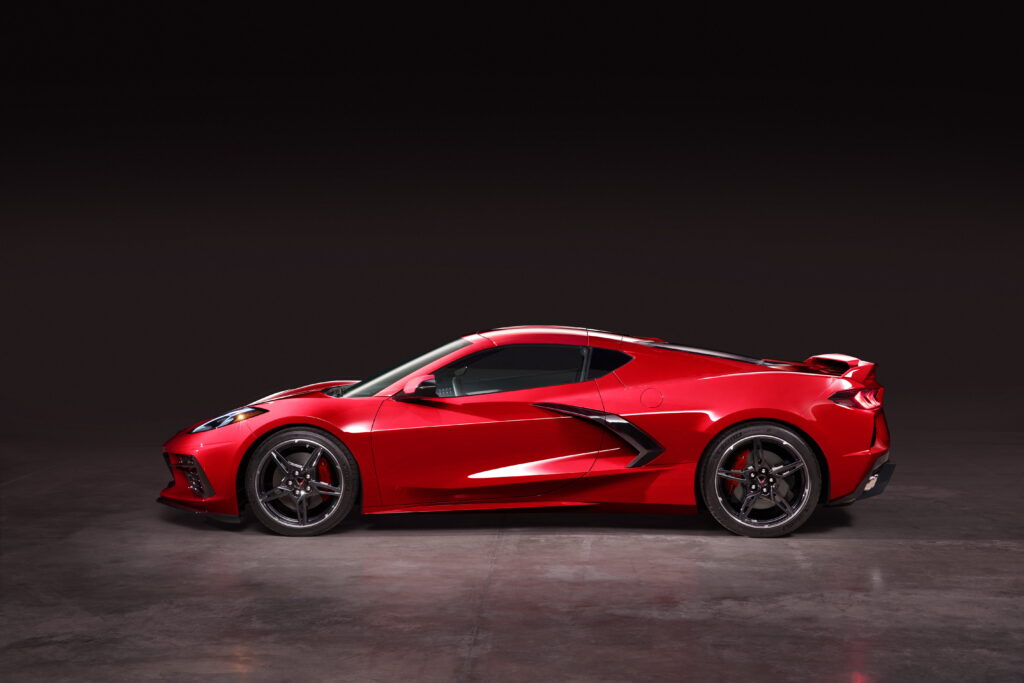
HC: Exactly.
SoS: That’s one of the features I just absolutely love about the car, and the ability, I think, to add stuff would be amazing. Now, in one of the slides – it was an early rendering of the driver display – there was a picture of a track map. Is that something that’s going to make it to the final car where you’re going to have a little track map in your display?
HC: We don’t have- that was a neat idea, again as a sketch, but- That would be pretty cool to have, but it’s not in the car.
SoS: It’s not currently in the car?
HC: it’s just a sketch at this point.
SoS: But you’ve moved more info into the head-up display – you can do lap timers, it’s going to be in there, right?
HC: Right, you get the lap timer in the head-up display, also in the cluster and it’s all integrated. You can also do, in the timing mode, the quarter mile, 0-60 stuff for the straight-line guys.
SoS: And it’ll be right there in the head-up display.
HC: Right there in the head-up. And we even do- have a new autocross mode, which is point-to-point-
SoS: Right!
HC: -Instead of a full circuit, and then we’re also going to have where you can save the start-finish lines and create a database so that everybody is using the same start/finish line at different tracks so you can compare better. And there will be a menu where you can just pick from existing tracks, and in working with Cosworth, they’re going to create a kind of- an official start/finish line for a lot of the major tracks. We’ll give them a list of some of the tracks we know Corvette people like to go to.
SoS: That’s amazing.
HC: To use.
SoS: That’ll be amazing. Is that something just going to be able to download?
HC: Yes.
SoS: That is unbelievable.
HC: Yeah, it’s just a file, it has an extension, so you can put those files on your SD card and name them after the tracks, and then you can just pick your start/finish line – instead of the old way of having to get there and stop, now you can just pick the name of the track and go.
SoS: Yeah, it’s good that you’re thinking of these things because that’s the stuff that people who use them are always struggling with. I have files for every track, and I have to reload them on there.
HC: And it’s a full HD now, which we didn’t have-
SoS: Right, before it was 720 now it’s 1080.
HC: It can go up to 1080, and you can record 480 or 1080 but the memory cards are so big now, it doesn’t matter that the files are quite big – it’s not really an issue now with the big SD cards.
SoS: So, when are journalists going to be able to get in these cars and when are we gonna start to see some road reviews and things along those lines?
HC: Probably later this year, I mean, we’re just starting to build cars that we consider a spec- a saleable spec, even though they’re not going to customers, they’re at the level. And when we get to that point we’ll start to see the magazines and the journalists get their chance to get the first impressions driving.
SoS: Yeah, well we can’t wait to get into some of these C8s and hopefully the paddles will be good enough for us to miss the left foot doing something, but I’m sure it will. Harlan, thanks so much for joining us, thank you. Thanks so much, man.
HC: Thanks.
SoS: Awesome. You have a dream job, my friend.
HC: I think so. That’s what I say.
SoS: Doesn’t feel like work, does it?
HC: There are days where it feels like work but no, I mean, today it doesn’t, that’s for sure.
